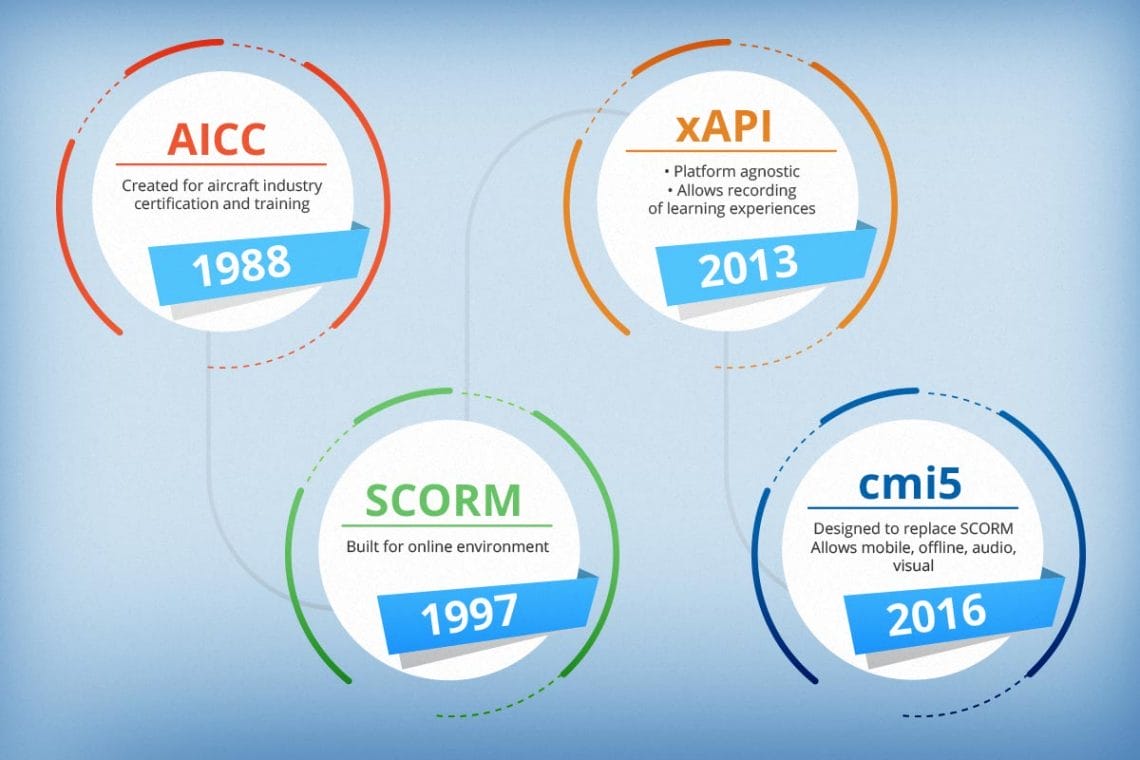
Understand the importance of eLearning standards and their evolution over the years
With the rise of digital downloads and streaming services, CDs and DVDs aren’t as big a deal as they used to be. But there’s a good reason they used to be useable almost anywhere, in any device, in most parts of the world: standards.
It’s also why most shipping containers on ships and trains around the world are the same size. It’s why AC outlets have the same size, voltage, and current rating (at least in the same country or region), and why batteries have specific sizes. And at its simplest, it is also why we have rules for things like language and communication.
For human civilization to work together and accomplish anything efficiently, we need standards to keep us all on the same page. And it’s no different in eLearning where, over the years, a number of standards have come about to help us use content authoring tools and learning management systems more effectively. In our continuing “what is” series, here we’ll look at the various eLearning standards for a better understanding of why they exist and what they do.

AICC
Before eLearning began to shoot for the stars by developing new standards, it actually took to the skies.
The aircraft industry needed to streamline training and certification, so all the big aircraft manufacturers got together and created the Aviation Industry Computer-Based Training Committee (AICC) around 1988 as a way to send course results to an learning management system. It was updated a few years later, using local files and PC-based programs to relay information and advancing to a web-based framework in 1999.
The AICC is no more, but it helped form the essential backbone of eLearning standards that are still used today.
SCORM
Chances are, if you’ve had any exposure to eLearning or content authoring, you’ve had some exposure to the Sharable Content Object Reference Model or SCORM. Its original version, SCORM 1.1 was created back in 2001 as an extension of the U.S. Department of Defense’s (DOD) ADL Initiative, which was developed to standardize and modernize training. After a little refinement, it was updated to SCORM 1.2, probably the most widely used eLearning standard even today.
The standard borrows heavily from AICC, but is much better suited to an online environment. It brings many essential elements to an LMS, but it has become increasingly limited. For example, its language only allows for answers to questions and completion/pass/fail test results. Today’s learning management systems have more robust requirements.
xAPI
Enter the Tin Can API or Experience API (now known as xAPI.) It’s a very simple standard that lets us collect data from an array of sources as opposed to just courses. It doesn’t do much more than define how we transmit data and where that data is stored. It’s also platform agnostic, so it doesn’t matter whether it is used in a web browser or on a mobile device’s native applications.
xAPI is considered a successor to SCORM and, as opposed to basic answers, allows the recording of “learning experiences,” effectively taking eLearning outside of the browser window and linking it to real-world performance, team-based learning, and learning plans and objectives.
cmi5
Released in June 2016, cmi5 is the most current standard and probably the only one still actively in development. It was originally intended to fully replace SCORM but now basically serves as a bridge between SCORM and xAPI, allowing users to use the best of both simultaneously. It’s progressive, insofar as it allows for mobile, offline learning while still syncing to online systems when they are accessible. It also allows for any kind of learning-related activity to be recorded, including audio, video, images, and simulations.
Want to see how eLearning standards manifest in a best-in-class learning management system? Try Docebo for two weeks free today to get started.
